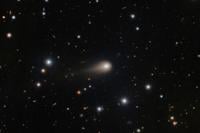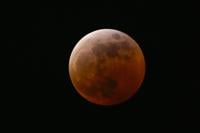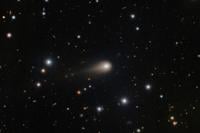CAPE CANAVERAL, Fla. (AP) — A comet from another star system will swing by Mars on Friday as a fleet of spacecraft trains its sights on the in…
CAPE CANAVERAL, Fla. (AP) — Scientists have uncovered new types of organics in icy geysers spouting from Saturn’s moon Enceladus, bolstering t…
This image provided by NASA shows the 360-degree view of a region on Mars called “Bright Angel,” captured on June 12, 2024 by NASA’s Perseverance Mars rover and is made up of 346 individual images that were stitched together after being sent back to Earth. (NASA via AP)
The year's second total lunar eclipse is coming up fast, and this time Asia will have the best seats in the cosmos. Earth's shadow will obscure this weekend's full moon as the home planet lines up perfectly between the moon and sun. Totality will last a lengthy one hour and 22 minutes. The shorter total lunar eclipse in March offered prime viewing in the Americas. But the upcoming spectacle unfolds on the opposite side of the world Sunday night and early Monday, local time. The entire eclipse will be visible in Asia, parts of East Africa and western Australia.
This image provided by NASA on Friday, Sept. 5, 2025, shows a scene of star birth in Pismis 24, a young star cluster about 5,500 light-years from Earth in the constellation Scorpius taken by NASA's Webb Space Telescope. (NASA via AP)
Telescope observations reveal a growing tail on the comet that's visiting from another star. Released Thursday, the pictures taken by the Gemini South telescope in Chile are the best yet of the recently discovered comet. They show a wide coma of dust and gas around the ice ball as it speeds closer toward the sun, and also a tail that's more extended than it was in previous shots. The National Space Foundation's NOIRLab says these new images confirm that the comet is becoming more active as it plows harmlessly through our solar system. It's only the third known interstellar object to venture our way.
Have you ever looked up at the sky and wondered what’s up there? Have you ever wanted to know more […]
WBOC Chief Meteorologist, Dan Satterfield, tells Jimmy and Lisa about building a scale solar system model. Dan made a scale model […]

















